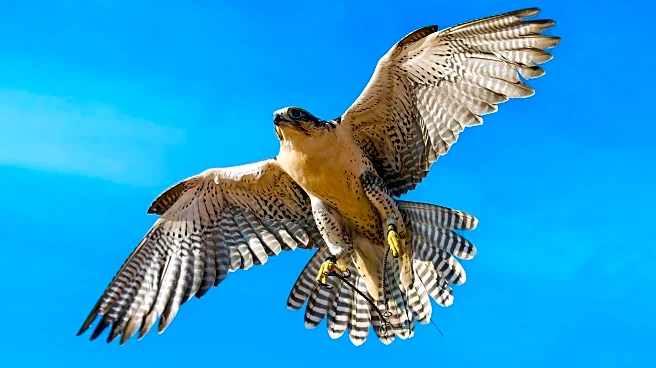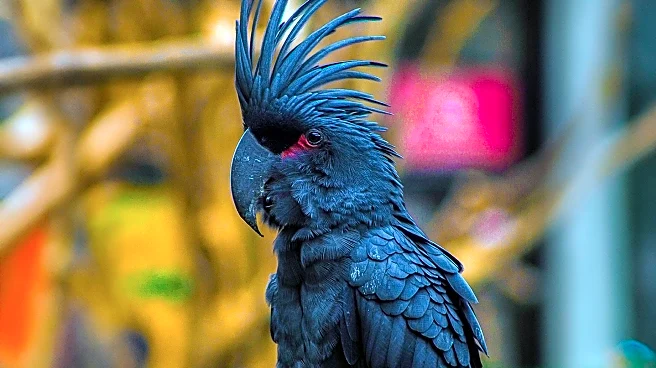What is the story about?
What's Happening?
The fall migration in Northeast Ohio is a significant natural event, showcasing the movement of various species such as monarch butterflies, ruby-throated hummingbirds, and tree bats. These species travel vast distances, with monarchs covering up to 3,000 miles to Mexico and hummingbirds undertaking a 500-mile nonstop flight across the Gulf of Mexico. The region's diverse ecosystems serve as crucial waypoints for these migrations. However, urban lights pose a threat, disorienting and endangering night-flying birds, leading to building collisions that claim millions of avian lives annually. Conservation efforts, such as the Lights Out Cleveland initiative, aim to mitigate these impacts by rescuing injured birds and collecting data.
Why It's Important?
The fall migration is vital for maintaining ecological balance and biodiversity. It highlights the interconnectedness of ecosystems across continents, as species rely on specific habitats for survival during their journeys. The challenges posed by urbanization, such as light pollution, underscore the need for conservation efforts to protect migratory species. Initiatives like Lights Out Cleveland not only help preserve wildlife but also raise awareness about human impacts on nature. Successful conservation can lead to healthier ecosystems, benefiting both wildlife and human communities by maintaining natural services like pollination and pest control.
What's Next?
Future efforts will likely focus on expanding conservation initiatives and increasing public awareness about the importance of reducing light pollution. Events like the wildlife rehabilitation and release hosted by the Lake Erie Nature & Science Center provide opportunities for community engagement and education. Continued research and data collection will be crucial in developing effective strategies to protect migratory species. Collaboration between conservation groups, local governments, and residents can enhance these efforts, ensuring the preservation of these natural phenomena for future generations.
Beyond the Headlines
The fall migration also offers cultural and educational opportunities, fostering a deeper appreciation for nature and its cycles. It can inspire local tourism centered around birdwatching and nature walks, contributing to the economy while promoting environmental stewardship. Additionally, the migration serves as a reminder of the broader impacts of climate change and habitat loss, urging society to consider sustainable practices that support wildlife conservation.
AI Generated Content
Do you find this article useful?
















